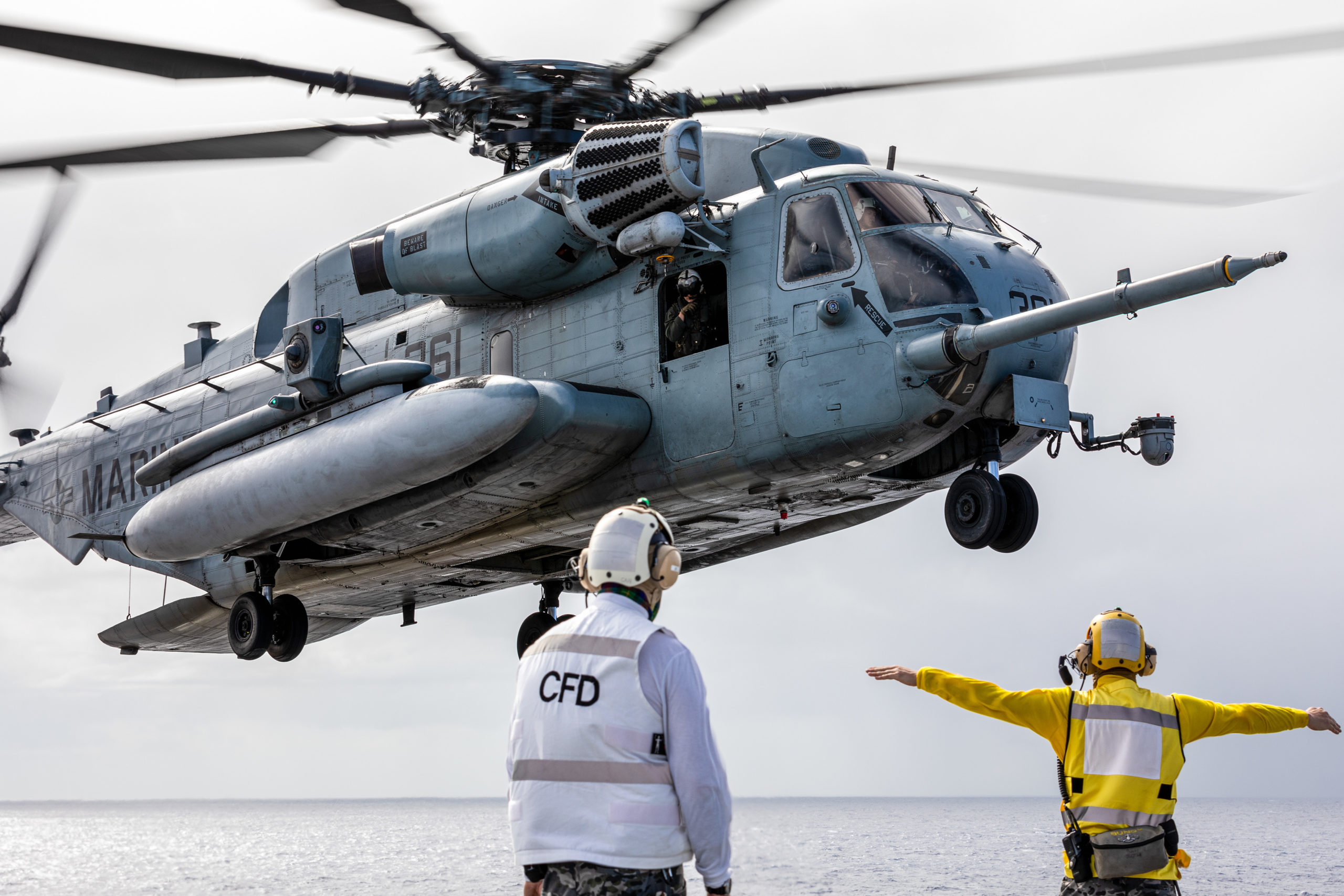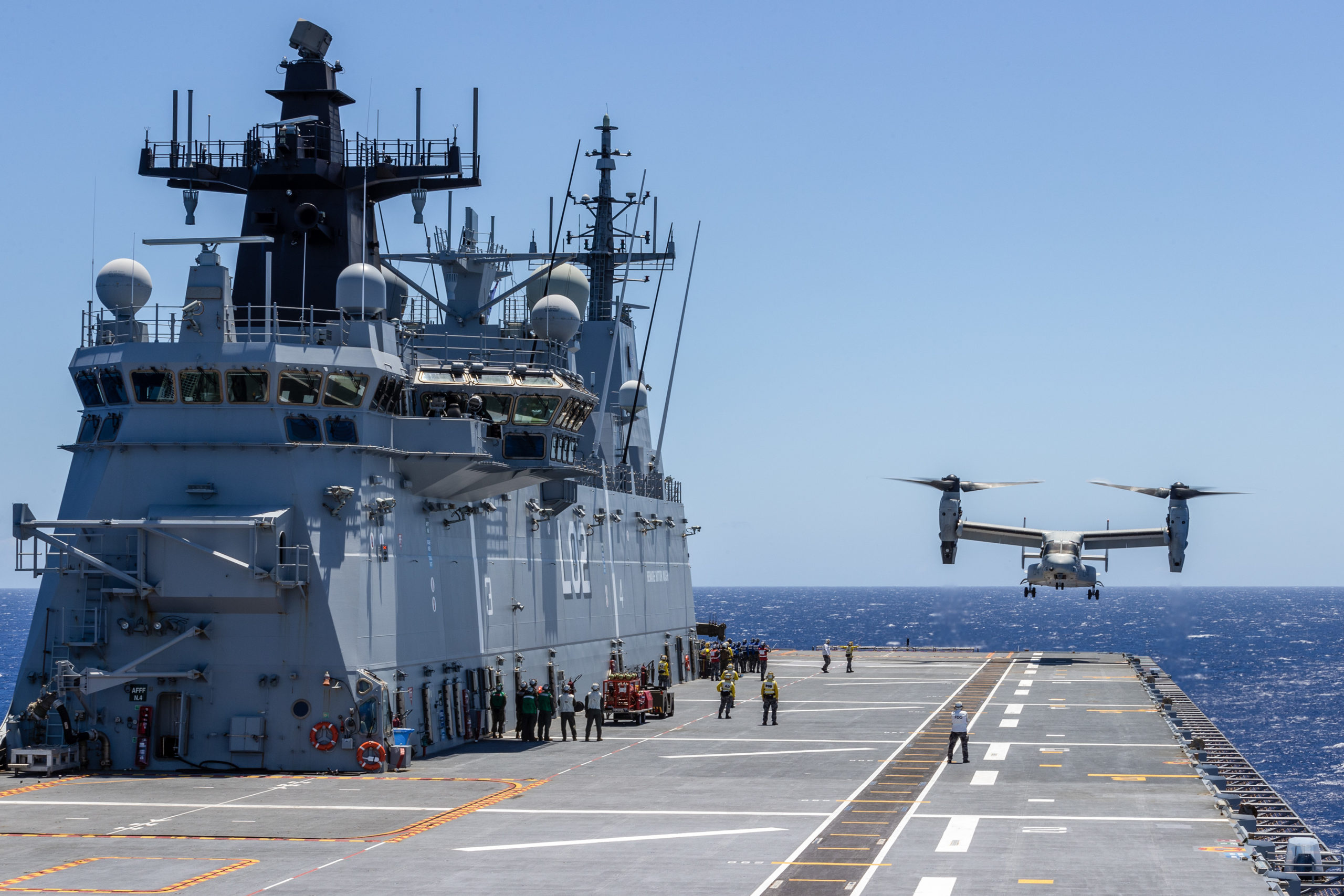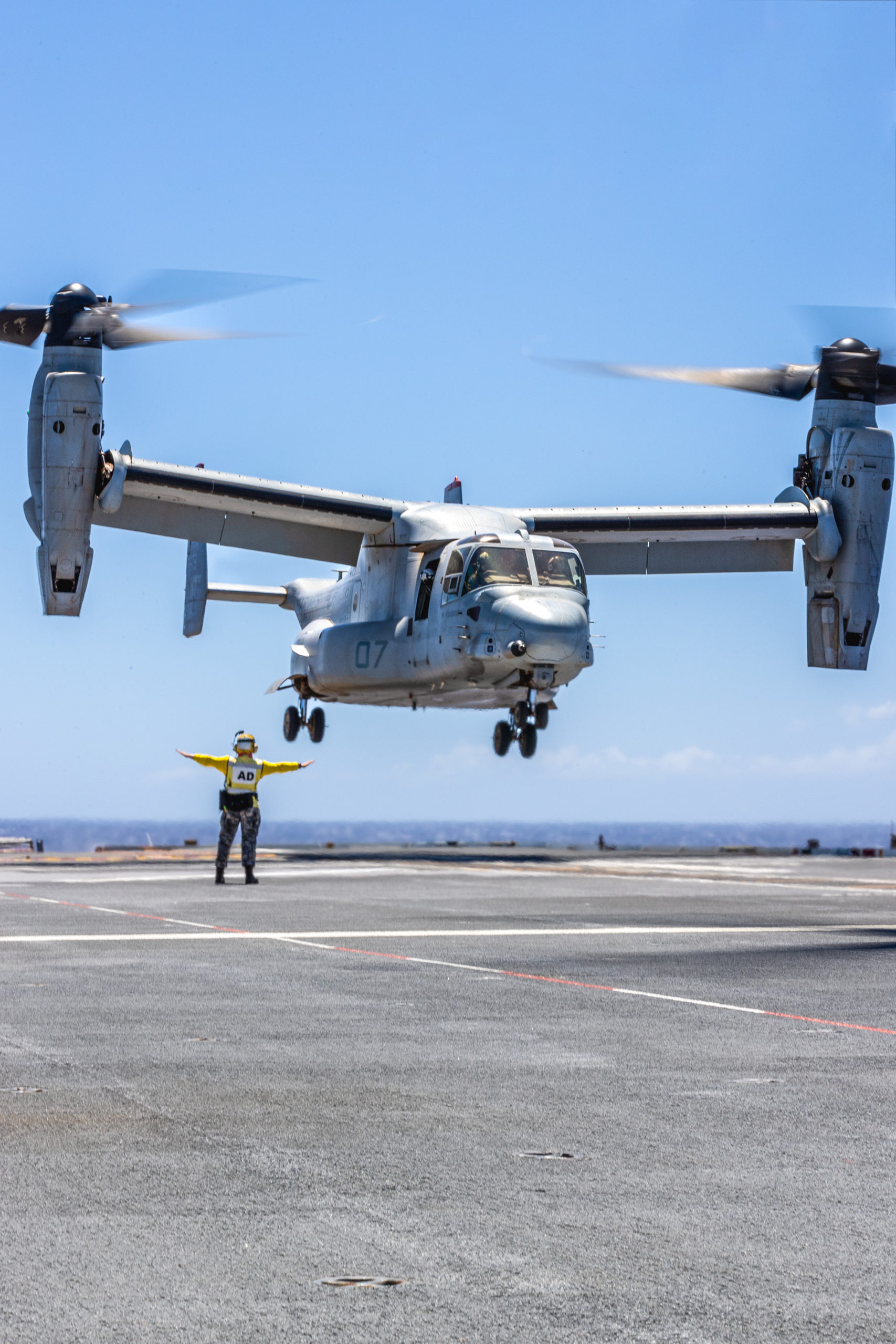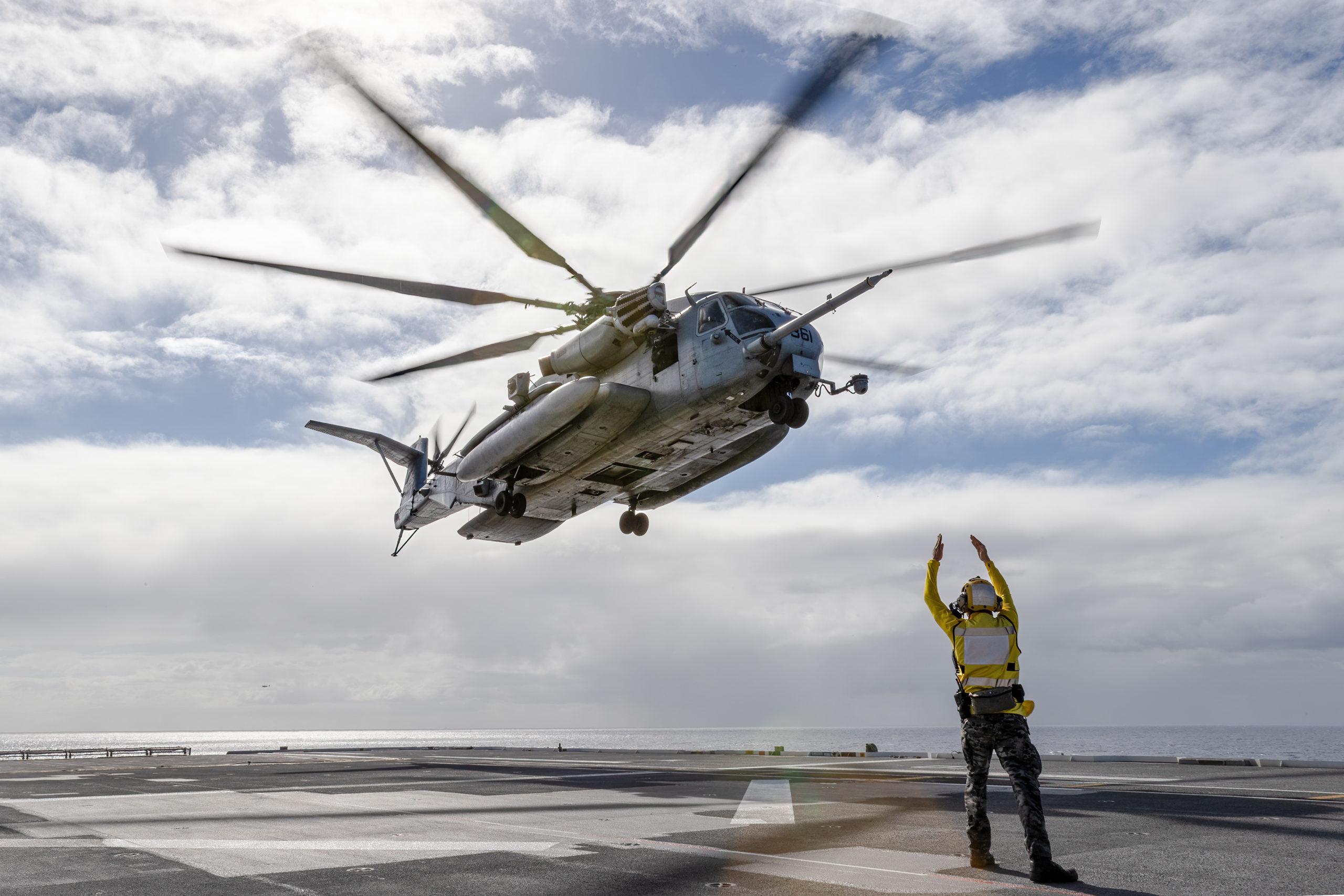By Robbin Laird
HMAS Canberra was born in a strategic context for Australia considerably different from today.
When the Australian government was considering adding an LHA to the force, the main focus was upon supporting HADR operations along with an ability to transport the Australian Army to regional areas of interest.
Effectively, it was considered largely as a seagoing greyhound bus.
Now the strategic environment in Australia’s region is considerably different and as that environment change so has the force structure both for Australia and its core allies.
And as we argued in our book on shaping a maritime kill web, the concept of what one can do with a large deck amphibious ship has changed as well.
This is how we put it:
“The evolution of the amphibious force and shaping amphibious task forces can contribute significantly to expanded capabilities for maneuver warfare at sea. By leveraging the new air capabilities, adding new defensive and offensive systems on the fleet, and expanding the C2 and ISR capabilities of the fleet, the contribution of the amphibious task force can be reimagined, redesigned, and thereby enhance the combat power of the U.S. Navy in maneuver warfare at sea.
“In a way a shift is underway from the amphibious fleet operating an Amphibious Ready Group/Marine Expeditionary Unit to an amphibious task force whereby the reach and range of the Osprey-F35-B-CH-53K combination, certainly built around the new class of LHAs can operate as modular task forces supplementing the classic carrier strike group to an expeditionary action group which can exercise sea control and sea-denial leveraging capabilities from the sea and to the sea integrated with the joint and coalition force.
“And building out the expeditionary seabasing enterprise can provide an additional way ahead for mobile basing as a strategic joint and coalition force capability.”
The Canberra-class is now operating in that new strategic context shaped by the evolution of Chinese and Russian forces and their assault on what the Aussie’s like to call the “rules based order.”
And they operating as well in the new kill web context as well.
Hence, the recent cross-decking of Ospreys from U.S. amphibious ships to HMAS Canberra can be seen as a step in these directions.
For the first time, the Ospreys are operating from Canberra during the at sea portion of the RIMPAC exercise. Here both the ground forces that have been deployed to Canberra and the crew onboard the Canberra can experience what the range and reach of an air refuelable Osprey can do for the ADF and the coalition forces.
Clearly, with the ADF focused on increased range and lethality of the force, the Osprey can be seen as a key contributor to making the Canberra class less of a troop transport ship and more of a kill web combat asset.
And with the CH-53E presaging the coming of the CH-53K, the contribution of a true heavy lift helicopter can be seen as well. Neither the NH-90 nor the recently acquired Chinooks are in this class of lift, and with the arrival of the digitalized heavy lift helicopter, the Marines are embarked on a new journey whereby a heavy lift aircraft can operate as a quarterback for a kill web insertion force as well.
In a July 18, 2022 article by Megan Eckstein of Defense News, an overview was provided on the Osprey deployment to Canberra.
According to HMAS Canberra Commanding Officer Capt. Jace Hutchison: “It’s an opportunity for us to now develop in an enduring manner by having two U.S. Marine Corps MV-22 aircraft embarked for the entire sea phase. That’s something that’s not happened before in the Australian context. We’re really looking forward to expanding the way that we operate those aircraft within the constraints of our platform.”
She added: “Being able to understand the left and right of arc allows you to then plan what sort of operations you can do together in the future. And that’s what we’re trying to do in these three weeks: we’re trying to understand what is the minimum we’re able to do, what is the maximum we’re able to do, and, both countries, what are we authorized to do. And then within that, we’ll work out what our integration really looks like,”
Eckstein provided insights as well from Lt. Sam Laidlaw, a flight control officer on the ship. He discussed as well working with the Marine Corps heavy lift aircraft, the CH-53E. Eckstein noted with regard to the discussion with Laidlaw the following: “The day the CH-53s flew out to the ship, the Australian and American teammates discovered one fundamental issue as the aircraft were on approach: the Australian ship crew was giving its position in true north, and the American pilots were expecting to receive it in magnetic north. The ship was pointed about 10 degrees off from what the Marine pilots were expecting.
“This is the reason why we have more conservative helicopter operating limits, because we don’t all do things all exactly the same way,” Laidlaw said.
The slide show highlights the engagement of USMC aircraft onboard HMAS Canberra during RIMPAC 22.
07.12.2022
Commander, U.S. 3rd Fleet







